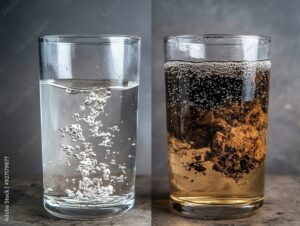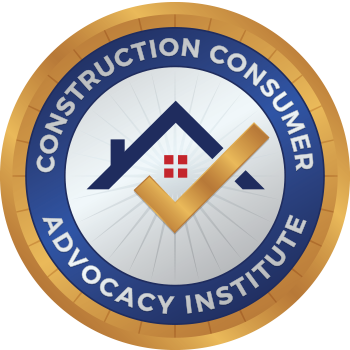When was the last time you thought about the quality of your home’s drinking water? For most of us, turning on the tap is second nature—we assume the water flowing into our glasses is clean and safe. However, it might surprise you to learn that even in homes with treated water sources, there can be hidden safety hazards lurking in your drinking water.
For homeowners, parents, and health-conscious individuals, understanding these potential risks is crucial for ensuring the health and well-being of your family. Here’s what you need to know about common safety hazards in home drinking water and how to protect against them.
How to Get the Best Water for Your Home or Business With Jeanne Carton – 02.29.2024
What Are the Common Safety Hazards in Drinking Water?
1. Lead Contamination
One of the most alarming risks in drinking water, lead contamination often comes from aging pipes or fixtures. Lead can leach into water, especially if pipes are corroded. Even low levels of lead exposure can cause health problems, particularly in children, including developmental delays and decreased IQ.
How to protect your family:
- Have your water tested for lead.
- Use a certified water filter designed to remove lead.
- Replace old pipes and fixtures containing lead if possible.
2. Microbial Contaminants
Bacteria, viruses, and parasites can find their way into your water supply. While municipal water systems use disinfection processes, issues like cracks in pipes, contaminated wells, or lapses in treatment can lead to the presence of harmful microorganisms, such as E. coli or Giardia.
Health risks:
- Gastrointestinal illnesses, which include nausea, diarrhea, and stomach cramps.
How to protect your family:
- Boil water in emergencies or use a UV water purifier.
- Install a filtration system that addresses microbial contamination for added protection.
3. Chemical Contaminants
Household drinking water may contain chemical pollutants such as pesticides, fertilizers, and industrial chemicals that seep into groundwater or surface water supplies. Additionally, substances like chlorine and chloramines, which are added to disinfect water, can form harmful byproducts.
Health risks:
- Long-term exposure to certain chemicals can increase the risk of health issues, including organ damage and certain types of cancer.
How to protect your family:
- Use water filters with activated carbon to remove chemical contaminants.
- Test your water regularly for common chemicals if relying on a private well.
4. Nitrate Pollution
Nitrates often stem from agricultural runoff or septic systems. Though typically found in rural or agricultural areas, they can make their way into water supplies anywhere. Infants are particularly vulnerable to high nitrate levels, which can lead to a potentially fatal condition called methemoglobinemia, or “blue baby syndrome.”
How to protect your family:
- If you live in or near agricultural regions, test your water annually for nitrates.
- Use a reverse osmosis system to filter water if nitrates are detected.
5. Heavy Metals
Heavy metals such as arsenic, mercury, and cadmium can contaminate water through natural deposits or industrial pollution. Consuming water contaminated with these metals over time can lead to serious health problems, including kidney damage and nervous system disorders.
How to protect your family:
- Determine heavy metal levels in your water through professional testing.
- Consider advanced water treatment solutions, such as ion exchange or distillation systems.
6. Hard Water and Excess Minerals
While hard water—caused by an excess of calcium and magnesium—doesn’t typically pose health risks, it can lead to other inconveniences, like scaling on appliances and dry skin. On the other hand, excessive levels of certain minerals such as iron or fluoride may raise health concerns over time.
How to protect your family:
- Install a water softener to address hard water issues.
- Regularly test for excessive or unbalanced mineral content.
How to Test for Water Safety 
Concerned about your home’s drinking water? Start by having it tested. You can either purchase at-home water testing kits or work with professionals to evaluate the quality of your water. Pay attention to:
- Physical indicators, such as cloudy water or unpleasant odors.
- Chemical and microbial contamination via comprehensive lab tests.
The Role of Water Filtration Systems
Once you know what’s in your water, the right filtration system can make all the difference. Look for solutions tailored to your specific household needs, such as carbon filters for chemical contaminants or reverse osmosis systems for heavy metals and nitrates.
What You Can Do Today to Ensure Better Water Quality 
- Stay informed: Research your local water source. Municipal water suppliers often provide annual water quality reports.
- Take action with filters: Not all filters are the same. Be sure to choose one tailored to remove the identified contaminants in your water.
- Maintain your plumbing: Address leaks, replace old pipes, and ensure your systems are free of contaminants.
- Spread awareness: Share insights with friends and neighbors—clean water should be a universal priority.
Final Thoughts
Clean and safe drinking water might sometimes feel like a given, but vigilance is key to ensuring your family’s health. By understanding the potential safety hazards in your home drinking water, taking proactive measures, and investing in appropriate filtration solutions, you can protect your household from silent risks.
Your family deserves peace of mind every time you pour a glass from the tap. Start today by testing your water or installing a certified filtration system, keeping your home and health in safe hands.
For Tons of Great Free Information please hit “Like & Subscribe”
Websiteconstructionconsumeradvocacyinstitute.com
www.youtube.com/@ConstructionConsumerAdvocacy

